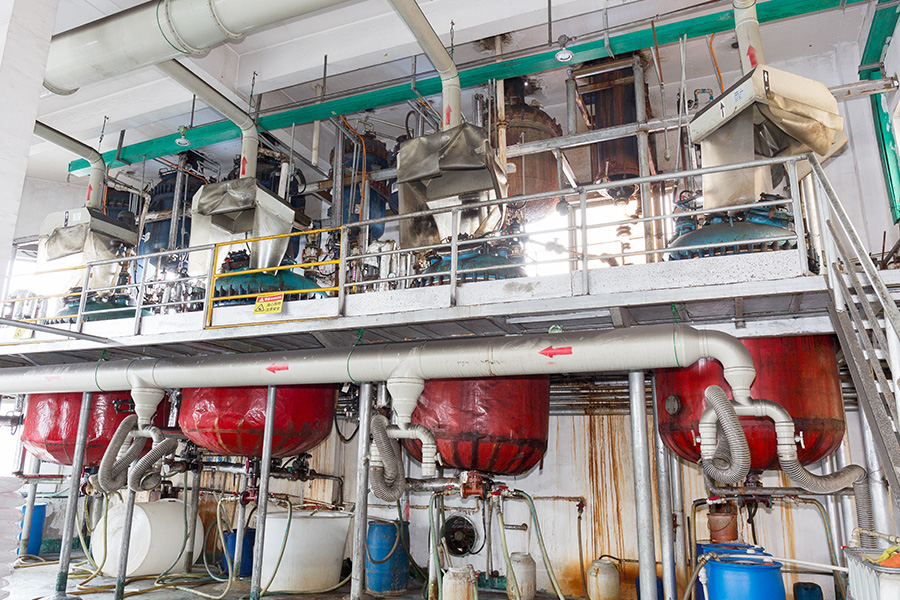In the oil and gas industry, one of the most persistent flow assurance challenges is the formation of scale within production and processing systems. Scale refers to the deposition of mineral salts that precipitate out of water, forming hard, crystalline solids that can obstruct production tubing, pipelines, valves, pumps, and other equipment. These deposits can drastically reduce operational efficiency, increase maintenance costs, and even lead to unplanned shutdowns. To combat this issue, scale inhibitors are widely used as a preventive chemical treatment, playing a vital role in maintaining continuous and economically viable oil and gas production.
What is Scale and Why Does It Form?
Scale forms when certain dissolved minerals in formation water, injection water, or produced water exceed their solubility limits due to changes in pressure, temperature, or chemical environment. The most common types of scale encountered include calcium carbonate (CaCO₃), barium sulfate (BaSO₄), strontium sulfate (SrSO₄), and calcium sulfate (CaSO₄). For example, when formation water containing high concentrations of barium ions comes into contact with seawater rich in sulfate ions (a common scenario during water injection operations), barium sulfate scale can rapidly precipitate and adhere to internal surfaces of production equipment.
Several factors contribute to scale formation: changes in thermodynamic conditions (such as pressure and temperature drops), mixing of incompatible waters (formation and injected waters), pH shifts, evaporation of water phases, and changes in CO₂ or H₂S concentrations. These factors are especially prevalent in enhanced oil recovery (EOR) methods and deepwater operations, where the operating environments are often extreme.
Role of Scale Inhibitors
Scale inhibitors are chemical additives designed to prevent or delay the precipitation and deposition of mineral scales. Unlike mechanical removal or acid stimulation, which are reactive solutions, scale inhibitors provide a proactive means of scale control. These chemicals interfere with the crystal growth processes of scale-forming salts through mechanisms such as threshold inhibition, crystal distortion, nucleation inhibition, or dispersion.
There are several classes of scale inhibitors, including phosphonates, polyacrylates, polymaleates, and sulfonated polymers. Each has unique properties that make them suitable for different scaling environments. For instance, phosphonates are known for their excellent calcium tolerance and thermal stability, making them ideal for high-temperature wells. On the other hand, polymers like polyacrylates are more environmentally friendly and effective at dispersing precipitated particles.

Application Techniques
Scale inhibitors can be applied using various methods depending on the well architecture, type of scale, and operating conditions. The most common application techniques include:
Continuous Injection: The inhibitor is injected continuously into the production stream via a capillary or injection line. This method is effective for surface and near-wellbore protection but requires constant chemical supply and monitoring.
Squeeze Treatment: In this method, a solution of the scale inhibitor is injected into the reservoir through the wellbore and then shut-in for a period to allow adsorption onto the rock formation. The chemical is then slowly released back into the production stream over time, offering long-term protection.
Batch Treatment: Periodic dosing of the inhibitor into the system without continuous injection. This method is less complex but typically offers shorter protection intervals.
The selection of a specific treatment strategy depends on several factors such as well depth, fluid composition, water cut, temperature, pressure, and the economics of chemical application.
Challenges and Considerations
While scale inhibitors are highly effective, their performance can be impacted by several operational challenges. High temperatures and pressures in deep wells can degrade certain inhibitors, reducing their efficacy. Additionally, chemical compatibility with other production additives (like corrosion inhibitors or biocides) must be ensured to prevent unwanted reactions or reduced performance. Environmental regulations also play a significant role in determining the types of inhibitors used, especially in offshore operations where discharge limitations are stringent.
Another critical aspect is the inhibitor return profile in squeeze treatments. Engineers must ensure that the chemical adsorbs well onto the formation and desorbs in a controlled manner to provide lasting protection. This requires careful lab testing, modeling, and sometimes the use of synergistic blends to optimize performance.
Advances in Scale Inhibition Technology
Recent developments in scale inhibition have focused on improving efficiency, environmental compliance, and cost-effectiveness. Nanotechnology is emerging as a promising area, with nano-scale carriers being developed to deliver inhibitors more effectively into porous formations. Biodegradable and green scale inhibitors are also gaining attention as the industry moves toward more sustainable chemical management practices.
In addition, advanced modeling software now allows engineers to predict scaling tendencies and design optimal chemical programs using real-time data from production operations. These digital tools help minimize overdosing, reduce environmental impact, and optimize costs.
Conclusion
Scale inhibitors are indispensable in modern oil and gas operations, offering a preventative solution to one of the industry’s most damaging production issues. Their proper selection, formulation, and application can mean the difference between uninterrupted production and costly downtime. As the industry evolves and faces more complex operational and environmental demands, the role of scale inhibitors will continue to grow, supported by innovations in chemistry, reservoir modeling, and treatment technologies. A well-designed scale management program not only ensures equipment integrity and flow assurance but also contributes significantly to the economic sustainability of hydrocarbon production.
 En
En
 عربى
عربى 中文简体
中文简体

